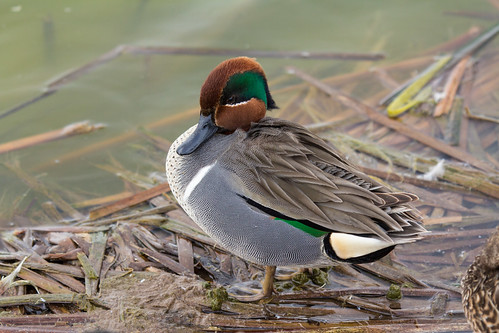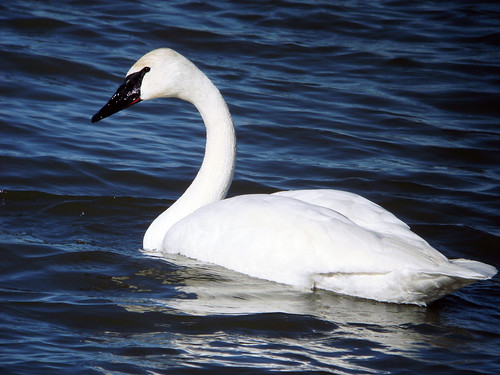 |
| Green-winged Teal |
Now that I’m well entrenched in middle age and have been studying birds since I was very young, I thought that there was little left I could learn that would leave me utterly stunned. That was until last week, when I was reading Kevin Johnson’s account of Green-winged Teal in The Birds of North America. He wrote that this is the only duck species known to scratch itself in flight. That was unexpected and cool, but even though I’d always assumed such a tiny, swift duck needed to focus on where it was headed, not personal grooming, while 100 feet off the ground, it wasn’t really so very shocking.
What shocked me was the reason why Green-winged Teal scratch in flight. It turns out that there’s a group of leeches that crawl into the eyes and nostrils of water birds to feed—a whole chapter of the U.S. Geological Survey book, Field Manual of Wildlife Diseases: Birds is even titled “Nasal Leeches.” Nasal leeches belong to the genus Thermyzon and the scientific name of the one most associated with ducks, called the duck leech, is quite fittingly Thermyzon rude. These leeches are not known to attack humans at all.
I mustered my courage and read more about them than I necessarily wanted to know. In North America, they’re by far most common in the north, especially in Alaska, the western half of Canada, and Idaho, Montana, Wyoming, and the Dakotas. They’re listed as common in Minnesota and occasional in Iowa, Illinois, and Michigan, but as rare or not reported in Wisconsin, leaving me to wonder whether the state really is an island of safety or whether Wisconsin hunters and waterfowl managers avert their eyes.
As leeches grow engorged, they can obstruct a bird’s nasal passages, pharynx, and trachea, eventually leading to suffocation, especially in ducklings and baby swans. And the tissue damage leeches cause can contribute to secondary bacterial infections. Nasal leeches are not solitary parasites. One researcher found as many as 57 in a single 4-week old Trumpeter Swan; another found 72 of them in one swan—their studies were conducted at Red Rock Lakes from the 1950s through the 70s, when Trumpeter Swans were endangered, and many researchers consider these leeches to have prevented the species from expanding even with protection and good management until the reintroduction program brought them to areas where the leeches are much less abundant.
Leeches cannot survive in salt water, and unattach themselves if exposed to it. This may explain why nasal leeches are least often found in mergansers, diving ducks, and loons, and most prevalent in dabbling ducks and swans. I’m not sure how geese protect themselves, but leeches are far rarer in geese than in other waterfowl. Infestations can be fatal, especially in cygnets and ducklings. When they are not feeding on birds from the inside out, nasal leeches occur as free-living organisms in aquatic environments, and in a bizarre symbiotic relationship, up until they grab onto a bird’s nostrils, they may instead provide food for waterbirds.
In all my years of waxing euphoric about the balance of nature, I never once considered that this balance included nasal leeches. Walt Whitman once wrote, “You must not know too much, or be too precise or scientific about birds.” I’m sorry to say he may have been right.
